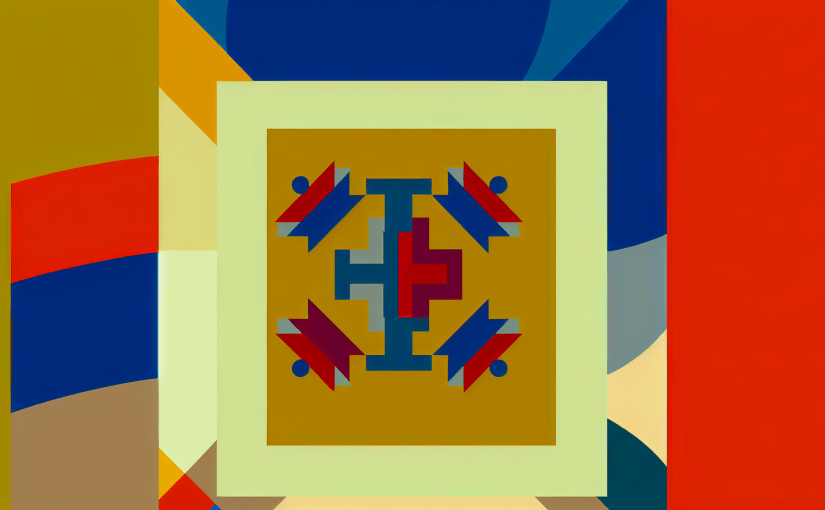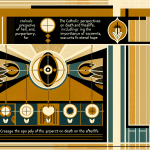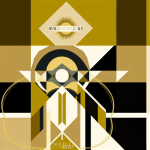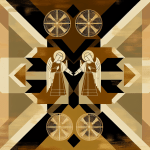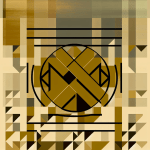Catholic Influence in World History
The Catholic Church has played a pivotal role in shaping world history throughout the centuries. From its inception in the 1st century AD to its modern-day influence, Catholicism has affected political systems, social structures, and cultural practices across the globe. This blog post explores the significant impact of the Catholic Church on world history, delving into its historical milestones, key figures, and broader societal implications.
The Origins of Catholicism
Catholicism began with the teachings of Jesus Christ and the subsequent establishment of the Church by his apostles. The term “Catholic” means “universal,” reflecting the Church’s mission to spread its message worldwide. The early followers of Christ faced persecution, yet the resilience of these early Christians laid the foundation for what would become one of the largest religious institutions in history.
The Formation of the Church and the Edict of Milan
In 313 AD, Emperor Constantine issued the Edict of Milan, which granted religious freedom to Christians and marked a turning point for the Catholic Church. This legalization enabled the Church to thrive publicly and politically, leading to an increased influence in various realms. Constantine’s support also initiated the construction of significant churches, including the Basilica of St. Peter in Rome, reinforcing the centrality of the Catholic Church in Western Christianity.
The Role of the Catholic Church in the Middle Ages
The Middle Ages were profoundly shaped by the Catholic Church, which became a dominant social and political force. During this period, the Church not only provided spiritual guidance but also played a critical role in governance and education.
The Church as a Political Power
The Papacy rose to significant power during the Middle Ages, exemplified by the reign of Pope Innocent III (1198-1216). Under his leadership, the Church exerted influence over monarchs and kingdoms, asserting its authority in political matters, which often resulted in the Church mediating disputes or even sanctioning wars, such as the Crusades. The Crusades, a series of religious wars initiated by the Church, aimed to reclaim Jerusalem and other holy sites, showcasing the extent of Catholic influence on global geopolitical affairs.
The Catholic Church and Education
During the Middle Ages, the Catholic Church established many of Europe’s first universities, laying the groundwork for modern education. Institutions such as the University of Bologna and the University of Paris were founded under the auspices of the Church. These universities not only advanced religious studies but also contributed to the intellectual revival known as the Scholasticism.
The Renaissance and the Catholic Church
The Renaissance, originating in the 14th century, marked a significant cultural and intellectual revival that intertwined with Catholicism. The Church played a dual role during this time, promoting artistic expression while confronting reformative ideas.
Artistic Patronage
The Catholic Church was a major patron of the arts during the Renaissance. Iconic works were commissioned from renowned artists such as Michelangelo, Raphael, and Bernini, whose masterpieces not only celebrated religious themes but also pushed the boundaries of human expression. The Sistine Chapel’s ceiling and St. Peter’s Basilica are testament to the Church’s commitment to artistic excellence, influencing the aesthetic values of Western civilization.
The Protestant Reformation
The 16th century ushered in the Protestant Reformation, a major schism within Christianity that sought to reform perceived corrupt practices of the Catholic Church. Figures such as Martin Luther and John Calvin criticized the Church for indulgences and other practices. In response, the Catholic Church initiated the Counter-Reformation, implementing internal reforms and reaffirming its doctrines at the Council of Trent (1545-1563). This period not only shaped Christianity but also influenced European politics, leading to conflicts such as the Thirty Years’ War, which had profound social consequences.
The Catholic Church’s Influence on Global Exploration and Missions
The Age of Exploration (15th to 17th centuries) was marked by European powers expanding their empires, with the Catholic Church playing a vital role in this cultural exchange.
The Missionary Efforts
As European powers colonized new lands, missionaries followed, seeking to convert indigenous populations to Christianity. Jesuit, Franciscan, and Dominican missionaries traveled to the Americas, Asia, and Africa, aiming to spread the Catholic faith. While these efforts often had devastating effects on local cultures, they significantly influenced the religious landscape of many regions, establishing Catholicism as a prominent faith worldwide.
The Globalization of Catholicism
Throughout the 16th to 19th centuries, Catholicism spread into Latin America, parts of Asia, and Africa, adapting to local customs while maintaining core doctrines. Today, countries like Brazil, Mexico, and the Philippines have large Catholic populations, showcasing the Church’s enduring legacy and influence.
The Modern Catholic Church in World Affairs
The Catholic Church continues to play a significant role in global affairs today. Its moral authority and outreach have positioned it as a key player in various contemporary issues.
Social Justice and Human Rights
In recent decades, the Catholic Church has increasingly emphasized social justice, advocating for the poor, marginalized, and oppressed. Popes like John Paul II and Francis have spoken out on issues such as poverty, climate change, and economic inequality, reaffirming the Church’s commitment to social teachings. The Catholic social doctrine draws attention to human rights and human dignity, influencing global discussions about equality and justice.
Interfaith Dialogue and Peacebuilding
The Catholic Church actively engages in interfaith dialogue, promoting understanding and peace among various religious communities. Initiatives such as the World Day of Prayer for Peace exemplify the Church’s efforts to foster unity in a world often divided by religious strife. By standing at the forefront of these dialogues, the Church seeks to address issues like extremism and violence, aiming for a cohesive global community.
The Church in Contemporary Politics
The Church continues to exert influence in political discourse, particularly through its global structure, the Vatican. The Holy See engages in diplomacy and international relations, often acting as a mediator in conflicts. The recent promotion of issues such as environmental stewardship highlights the Church’s role as a moral compass in global policymaking.
Conclusion: The Enduring Legacy of Catholic Influence in World History
The Catholic Church’s influence in world history is undeniable, shaping societies across continents and eras. From its origins as a persecuted sect to its emergence as a worldwide religious entity, the Church’s impact has woven intricately into the fabric of global history. Its rich legacy encompasses art, education, social justice, and international diplomacy, marking it as a significant player in historical developments.
In a world grappling with various challenges, the Catholic Church’s teachings and outreach continue to resonate, reminding us of the power of faith, community, and moral responsibility. As we reflect on the Catholic influence in world history, it becomes evident that the Church’s journey is far from over; it persists in playing an influential role in shaping tomorrow’s world.
By understanding the Catholic Church’s historical context and its ongoing impact, we can better appreciate the complexity of global cultures and the interconnectedness of faith, society, and history.
